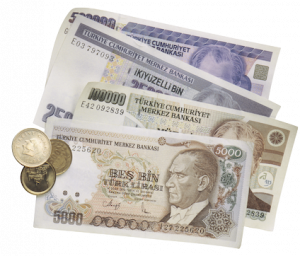USD To Turkish Lira Rate Today
 The USD to Lira rate today continues to attract attention from traders and financial analysts worldwide. Currency fluctuations reflect changes in demand, economic updates, and geopolitical activity. Many traders monitor daily charts to track shifts. Movement in either direction can affect buying decisions. Therefore, rate tracking remains necessary across sectors.
The USD to Lira rate today continues to attract attention from traders and financial analysts worldwide. Currency fluctuations reflect changes in demand, economic updates, and geopolitical activity. Many traders monitor daily charts to track shifts. Movement in either direction can affect buying decisions. Therefore, rate tracking remains necessary across sectors.
Daily updates show pressure of Turkish Lira rate today
The Turkish Lira rate today has remained under pressure against the US dollar in recent weeks. Daily data shows repeated depreciation in the local currency. Factors like inflation and policy decisions influence this direction. Additionally, global uncertainty increases volatility. Recent reports suggest that international interest in the USD adds to the strain on the Lira.
Central bank moves shape market response
The Turkish Central Bank plays a strong role in shaping market response to currency rates. When the bank tightens policies, the Lira may show signs of strength. However, aggressive dollar demand often overshadows local measures. As monetary policy decisions change, market participants react quickly. Each announcement affects the exchange rate.
Investor sentiment supports the dollar
Investors continue to show preference for the dollar amid economic concerns in other markets. This sentiment drives the USD upward. As global events shift, risk aversion increases. Many investors prefer safer assets like the US dollar. As a result, the Lira faces resistance and weakens on global platforms.
US Data strengthens the dollar outlook
Positive data from the US economy supports the dollar’s position globally. Employment numbers and economic growth help maintain strength. This ongoing trend supports further USD gains. Consequently, the Lira sees downward pressure. Even minor announcements from the Federal Reserve can push the exchange rate higher.
Turkish Economic data affects the exchange rate
Reports on inflation and unemployment impact Lira movements. The local economy shows signs of strain. Prices continue rising within Turkey, creating more instability. When inflation data is worse than expected, the Lira loses value. In contrast, signs of recovery can offer some temporary support.
Demand for US Currency increases globally
Demand for the US dollar continues to grow around the world. As more countries rely on dollar reserves, value rises. This trend strengthens the USD to Lira rate. Exporters and importers feel the impact of these shifts. Businesses involved in global trade often react swiftly to these movements.
Energy prices drive market volatility
Turkey depends on imported energy, which increases vulnerability to global price changes. Rising oil prices weaken the Lira. Each increase in energy costs raises the trade deficit. This situation puts more pressure on the Lira against the dollar. Higher costs lead to higher demand for USD in the country.
Interest rate changes create new patterns
When interest rates in the US rise, investors move assets to dollar-based options. This weakens other currencies. In Turkey, changing local rates affect borrowing and spending. If rates rise domestically, the Lira can gain some strength. But this often depends on external economic conditions and investor reaction.
Lira Weakness affects local consumers
Exchange rate changes impact everyday life in Turkey. Prices of imported goods increase when the Lira weakens. This affects food, fuel, and electronics. People in Turkey feel the effects of these changes directly. As costs rise, confidence drops, adding further pressure on the local currency.
USD Becomes the safe choice for many
In times of uncertainty, the US dollar becomes a preferred option. Global events push investors toward safety. Natural disasters, trade tensions, and political news can cause this shift. As a result, demand increases for the dollar. This adds more pressure to the Lira’s performance against the USD.
Market speculation fuels currency volatility
Speculators monitor trends and react fast to minor changes. Their decisions influence the exchange rate. Large movements occur based on anticipated events. Market psychology drives many decisions on currency trades. This adds short-term volatility to the USD to Lira rate. Long-term investors often respond with caution.
Global trade patterns influence exchange rates
Global trade movements directly affect currency strength. Turkey’s trade balance with the US affects the Lira. High imports of US goods increase demand for dollars. This raises the USD rate further. On the other hand, strong exports can ease the pressure. However, this often depends on global demand.
Seasonal trends shift currency flows
Certain months bring changes in tourism and trade. These affect the demand for different currencies. Summer often brings more USD into Turkey through tourism. This helps strengthen the Lira temporarily. However, once the season ends, the demand for dollars rises again for imports and external payments.
Political factors impact the Lira Rate
Political events in Turkey and the US can drive changes in exchange rates. Statements from leaders impact investor confidence. Elections, policy reforms, and diplomatic news can all trigger fluctuations. Even rumors can affect short-term rates. Investors watch political developments closely to adjust their currency positions accordingly.
External debt obligations increase USD Demand
Turkey’s external debt, mostly in US dollars, increases pressure on the Lira. As payments come due, demand for USD rises. This increases the exchange rate. Government and private sectors must acquire more dollars to meet obligations. As a result, the Lira declines against the US dollar.
Remittances and tourism provide temporary relief
Remittances from abroad and tourism income can help support the Lira. These bring foreign currency into the country. During high travel periods, increased tourism helps cushion the Lira. However, these effects are often short-lived. Once the flow slows, the exchange rate returns to broader global trends.
Geopolitical tensions strengthen the dollar
Conflict and instability in nearby regions support the US dollar. Investors move toward safer currencies in these times. The Lira weakens under such stress. The dollar remains the top choice during emergencies. Even distant events can influence market preferences quickly and change exchange directions.
Corporate and government buying moves the market
Large purchases of USD by companies or government bodies affect the rate. When public or private institutions acquire dollars, prices rise. These actions often relate to payments, trade, or reserves. Market participants monitor these movements closely. Even small increases in demand can push the rate higher.
Currency reserves play a key role
Turkey’s central bank holds currency reserves, including US dollars. These reserves support local currency stability. When reserves fall, pressure increases on the Lira. If reserves rise, confidence improves slightly. However, this alone cannot always stop a downward trend. Investors also look at broader market indicators.
Retail behaviour reflects currency anxiety
Individuals in Turkey often buy dollars when the Lira weakens. This behavior contributes to further losses in the local currency. People convert savings to foreign currency to protect value. This cycle repeats when inflation expectations increase. The central bank may intervene but with limited long-term effect.
Digital and online trading increases participation
More people now follow exchange rates through online platforms. This increases real-time responses to news and data. As access grows, trading volume rises. Each reaction adds movement to the market. The USD to Lira rate reflects this constant monitoring by both individuals and institutions.
Global economic news changes investor focus
Economic updates from the US or other large markets change focus instantly. If job numbers are strong in the US, the dollar strengthens. Poor performance elsewhere also supports the USD. Investors shift funds accordingly. This impacts the Lira negatively, especially during periods of weak local performance.
Domestic confidence supports or weakens the Lira
Public trust in economic policies affects the currency rate. When people trust the system, the Lira may find support. In contrast, weak trust leads to quick conversions to USD. Business confidence also drives investment trends. These local attitudes carry weight in exchange rate movements.
Technology and infrastructure affect trade and currency
Efficient infrastructure can improve trade, reducing pressure on the currency. Turkey’s developments in logistics and energy matter. When systems improve, exports become more attractive. This supports the Lira. However, delays or shortages increase costs, which raise demand for dollars. Economic productivity links directly to currency strength.
Outlook depends on many moving parts
Today’s USD to Lira rate reflects a mix of local and international events. The Lira faces pressure from many directions. The dollar gains from global confidence and strong US data. Central bank policy, market sentiment, and economic reports all contribute. Each change in one area affects the others. The cycle continues daily.
Path forward for currency stability
Sustainable currency strength needs balanced trade, controlled inflation, and reliable policies. External events still matter. However, stable policies can reduce sudden changes. The USD to Lira rate may stabilize if external pressure drops. Until then, trends suggest ongoing volatility in the currency pair.
Looking ahead with cautious optimism
The Lira’s path will depend on consistent reforms and global cooperation. Today’s rate reflects challenges but not permanent outcomes. Positive changes in governance and trade can support currency gains. The dollar will likely stay strong, but some balance is possible. Close observation will remain necessary for all stakeholders.










